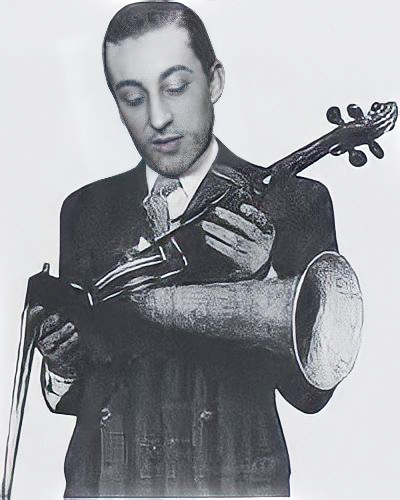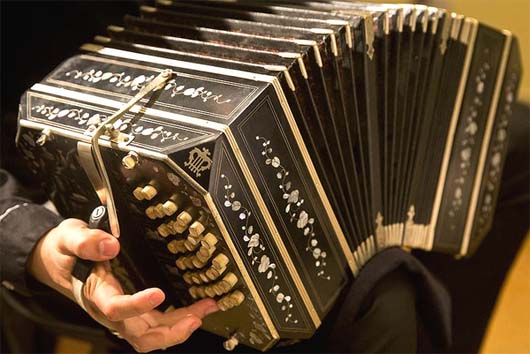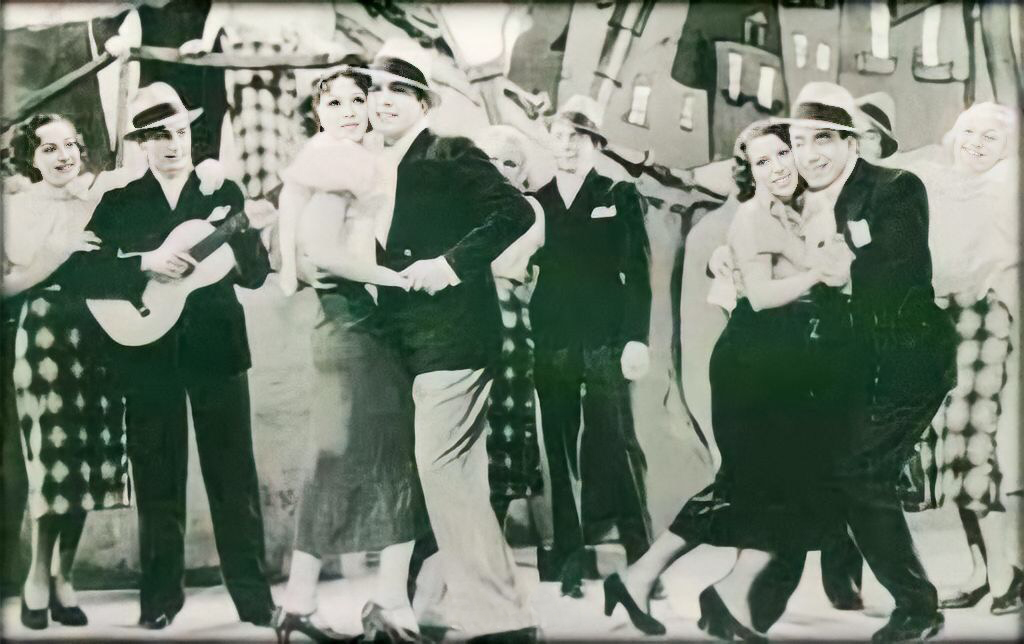
 |
What does the Argentine Tango represent More than a century after its birth, Argentine Tango is experiencing a renewed worldwide popularity due to the universal character of its message: immediate communication, engaging intimacy and dialogue characterized by improvisation.
Tango is music, social and theatrical dance, prose and poetry, and undoubtedly a way of life. Its main characteristics are those of a culture that expresses the dark side of life, initially considered sinful and indecent, but later succeeded in being universally accepted until its definitive consecration as a spokesperson for Argentine culture in the world. On September 30, 2009, the United Nations Cultural Organization, UNESCO, declared Tango as an intangible cultural heritage of humanity. "Constantly seeking the idea of communion between two bodies in a single dynamic structure, yielding, adapting and complementing each other, just like in life". RODOLFO DINZEL, one of the great masters of all time.
|

are manifold and it is difficult to uniquely determine who and what generated it. As happened for most of the popular expressions, the Tango is the result of the convergence of various influences and experiences, and of different converging cultures, in the second half of the 19th century in the Rio della Plata region, in South America. A date indicated by many as the starting point of our history is around the year 1880. The year in which Buenos Aires, already the largest port and most dynamic city in the country, becomes the political capital of the Argentine Republic.
Tango apparently developed between the port areas of the cities of the Rio de la Plata. With the construction of the new port of Buenos Aires, in 1870, wealthy citizens fleeing the chaos generated by these immigration waves moved from the south to the north of the city. In that period, the urban society of the great Rio-Plateau metropolises, Buenos Aires (Argentina) and Motevideo (Uruguay), went through a phase of great movements due to massive immigration both from the surrounding countryside and from European nations. The largest ethnic groups flocked to the city suburbs, from African Americans who had recently obtained liberation, after centuries of slavery, to gauchos from the pampas, to Italian, Spanish, Polish, Hungarian immigrants and generally from poorer areas of Europe. European immigrants and those from within the country therefore find themselves living together in the orillas of the city, the peripheral poor neighborhoods, also known as arrabal: La Boca, Corrales Viejos, Miserere, Bassa Belgrano. The orilleros are the marginalized, those who belong to the lowest segments of the population and who aspire to access the social life of the more affluent classes. For this reason it is assumed that Tango was born in those slums.

The population of the suburbs of Buenos Aire at the beginning of the twentieth century was mainly male (the soldiers were all men and the immigrants were often single men), which is why the prostibulo (brothel) business flourished and became the main place of socialization. In these “prostibulos porteños” (brothels of the Buenos Aires arrabals, called quilombos), it became necessary to entertain customers with music borrowed from small popular leisure haunts… including tango. The tango, therefore, in this first period, stands out as an expression of a popular culture born from the meeting of the different communities of emigrants in the Rio della Plata region. Only later did Tango become an artistic form, which includes tango music, tango dance and tango poetry with tango lyrics and songs characterized by the emerging life in the suburbs of Buenos Aires, Rosario and Montevideo.


Mi Noche Triste, is the first text written in 1915 by Pascual Contursi of a sentimental tango in which the poet sings an unhappy love.
|
Percanta que me amuraste |
|
Perch that you tamed me |
Argentine Tango as Music. In the Thirties and Forties of the twentieth century dance and especially the music of Tango experienced the maximum artistic development. Cabaret, academies, competitions, radio and cinema: all these rapidly developing factors contributed to the formation of the "typical" orchestra, first, and then of the great Tango orchestras. Evolution parallel to that which led the great North American orchestras to make Jazz and Swing music known all over the world. The tango uses for its performances an instrument, perhaps invented or perhaps popularized by the German musician Heinrich Band, the bandoneón, a diatonic musical instrument similar to the accordion or accordion. Being diatonic, different notes are obtained with the same combination of keys, depending on whether the bellows are compressed or dilated. Although the music of Tango is a very syncopated music, it does not use percussion instruments and also the other instruments used are played in a very particular way to give strong beat accents and rhythmic signatures. The Tango Music, Its harmonic structure comes from the Payada and the Milonga Criolla (arrived from the countryside through the Gauchos), the Habanera (brought by the freed slaves) and the Tango Andaluz (from the Spaniards). In the recording studios it will undergo a change in its harmonic structure, which, if even marginally, was much noticed by the "Tangueros" of the suburbs in the late 1920s. The names of the major music composers from the early twentieth century to the golden age, that of the 30s and 40s, Julio de Caro, Aníbal Troilo, Juan D'Arienzo, Carlos Di Sarli, Osvaldo Pugliese, Francisco Canaro, they are all children of Italians (Argentines in general are children of immigrants, and the urge to find their own identity pushed Tango music to its appearance not only as simple music but as a sad thought that is danced) . The composer and conductor Astor Piazzolla himself had an Apulian father.
 |
 |
|
To know the fascinating world of Argentine Tango today,
learn the first steps of tango and come dance with us o Attend our next tango event Learn more>
Argentine Tango as a dance has even more mysterious origins than those of its music. The Argentine Tango was born as a dance performed by the inhabitants of the port areas of Buenos Aires, where immigrants brought their music and their dances, from traditional and peasant dances to the waltz, the mazurka, the polka, dances widespread in Europe in the nineteenth century. These music began to be performed in the rooms where the milonga was played, with such influences that determined the way of dancing and the birth of the new style that gave life to the Tango criollo. Certaente among the other musical forms that led to the birth of the tango should also be mentioned the Habanera (dance originating in Cuba) and the Tango Andaluz (variant of Tango Flamenco). In all this the Milonga, which was mainly improvisation inspired by African dances, the Candombe dance, began to acquire a set of steps and choreographies, beginning to define itself as Tango. Some speculate that the compadritos began to dance the milonga by imitating and mimicking the blacks who danced the candombe. Others speculate that these characters began to dance in their own way, to tango music, figures and movements taken from other couple dances such as mazurka, polka and waltz, introducing two main movements: The characteristic court (sudden interruption of the movement in the execution of the dance) and the quebrada (abandonment of the woman in the embrace of the knight). The Tango thus began to take on its connotation as a wonderful intertwining of African and European emotions and themes.
 |
 |
Its origins were those of an argot or slang of prisoners, (used in prisons to avoid being understood by the guards), jargon of Buenos Aires, with terms of different origins including various Italian languages such as Genoese and Neapolitan, brought in Argentina by immigrants. In this context, the creation of a particular form of speaking is also inserted by inverting the order of the syllables of a single word, called vesre, that is the inverse of revés, which means 'reverse'. Here then, in vesre, tango turns out to be gotán, amigo gives gomía, cabeza is zabeca, etc. The rules for inverting the syllables, however, may vary according to the words, in fact, for example, the vesre of pantalón is lompa, which is the abbreviated form. In French there is a similar argot, verlan, which is the phonetic vesre of l'envers.
Nobody knows who gave the name of tango to this dance, nor is it known exactly why it is called this way. However, African culture has left an indelible mark both in the dance and in the musicality of Argentine Tango and we remember that "TANGO" in one of the many South African languages means "TOGETHER", a fundamental characteristic that we find in its dance. [Citation needed] In Latin the verb tango means "to touch". Its musical origins are presumed to be of mixed origin, between the indigenous rhythms of the Iberian peninsula and the more melancholic ones of Eastern Europe. According to others, it is even connected in its origins with certain African dances and with the Cuban habanera. Desde el alma is the most famous Tango Vals Criollo. But what not everyone knows is that it was written by Rosita Melo when she was only 14. At the beginning of tango, in 1866, an Argentine newspaper used the term tango for the first time to designate the song "La Coqueta" (with reference to the musical genre most identified with "tango", the Argentine Tango).
Many believe that in the beginning the tango was danced only by men, and cite photographs that document it. The reality was very different. To learn how to dance the tango, the men practiced with each other (away from the milonga) and only after learning the technique was he allowed to invite women. It was a sort of apprenticeship necessary to better respect the few dancers of the time.
has been danced in Argentina since the mid-eighteenth century, and precisely in the Pampa Argentina where the strong African influences, in particular that Candombe dance, took hold with the arrival of the first slaves in the colonial era.
before 1880 it was called Tango, a dance form of the Negro Criolla population, now emancipated from slavery, which took up the rhythms of the candombe dance and which in the name recalled the beats of percussion instruments in onomatopoeic form, or "tan", or " tango". In 1876 a Candombe dance called "Merengue" or "Pai" became very popular, which became a successful Afro-Argentine carnival held in February of that year. It is played on the guitar, violin and flute, in addition to the Afro-Argentine Candombe drums (caller and snare drum). It was taken seriously, it was this context of the starting strengths for the birth and development of Tango.
(even if not authored) is "La Canguela" (1889) and is located in the Rosario Score City Museum. On the other hand, Tango's first record (with copyright registration) is "El Entrerriano", released in 1896 and printed in 1898 by Afro-Argentine Rosendo Mendizabal.
Dancing Tango in Rome |
Discover the Tango Allegria event closest to you.
|
Our Community |
Join our group and make new friends around the world. |
|
Seguici su
|
Tango and not only Tango |
Discover new passions organised by our Tango friends. |
Tango Allegria is the association that from the heart of Italy brings the passion for Argentine tango to the world, organizing unforgettable holidays, trips and events. If you love dancing, traveling, meeting new people and experiencing authentic emotions, you are in the right place.
Discover our tango holidays in exclusive locations: at the seaside, at the spa, in cities of art or in the middle of nature. Each experience combines tango, relaxation and fun.
Throughout the year we organize Argentine tango events with internationally renowned Argentine masters, intensive seminars, evening milongas, thematic courses and guided practices. Each event is an opportunity to improve your dance and share your passion in a welcoming and engaging environment.
With Tango Allegria you don't just experience tango, but also the beauty of the journey, the pleasure of wellbeing and the joy of meeting.
Our events are designed for everyone: beginners, intermediates and expert dancers.
📅 Upcoming Events• Tango in Finland – 1–6 October 2025• Buenos Aires Tango Tour – 17–28 November 2025• Ischia Tango Party – 30 April–3 May 2026 |
Do you want to stay updated on tango trips, special events, study weeks and exclusive offers?
Sign up for our newsletter and start living tango with us.
Since 2003 we have been bringing tango wherever there is a desire to get excited, learn and dance. We are waiting for you for a unique experience.